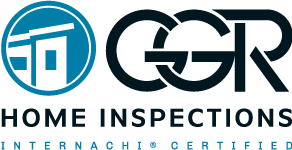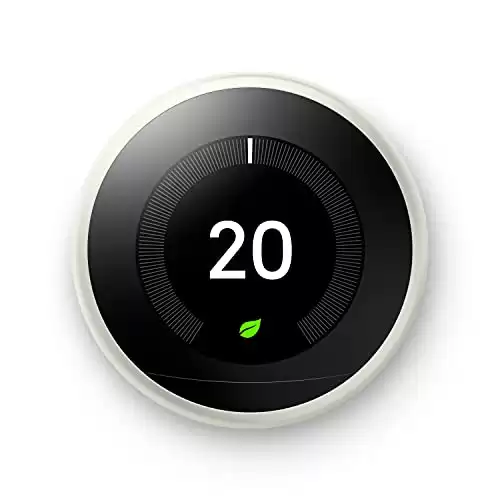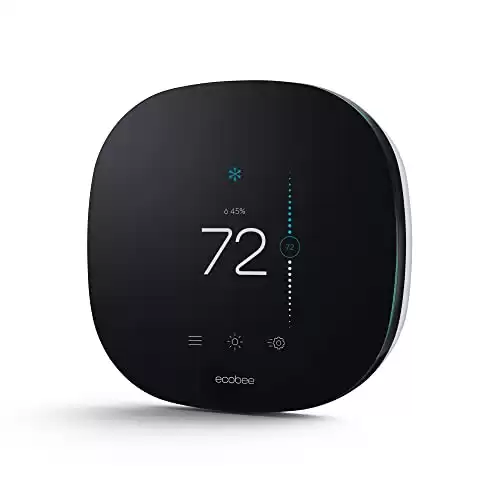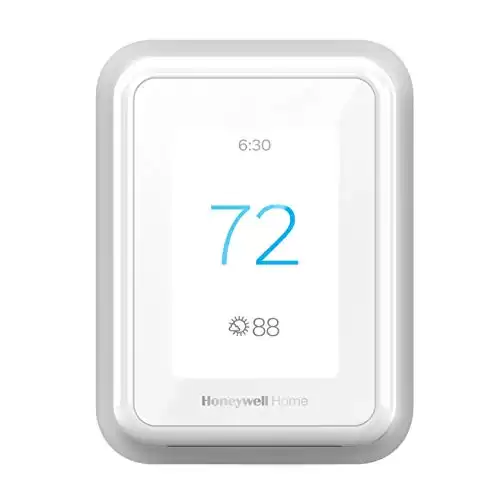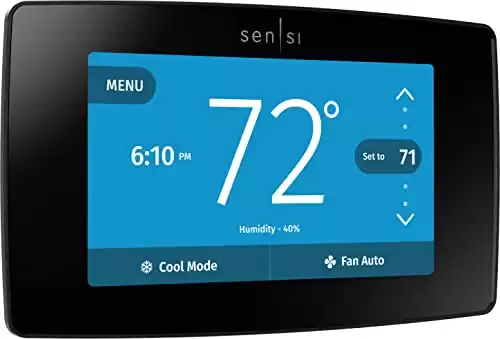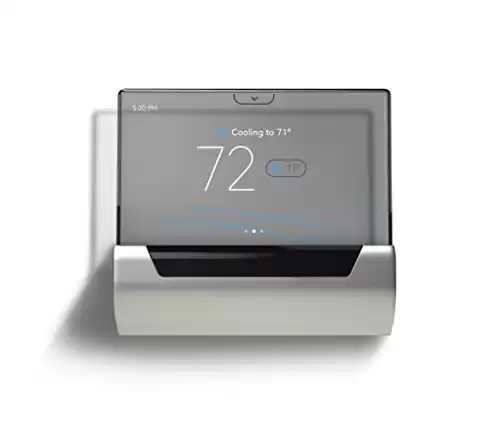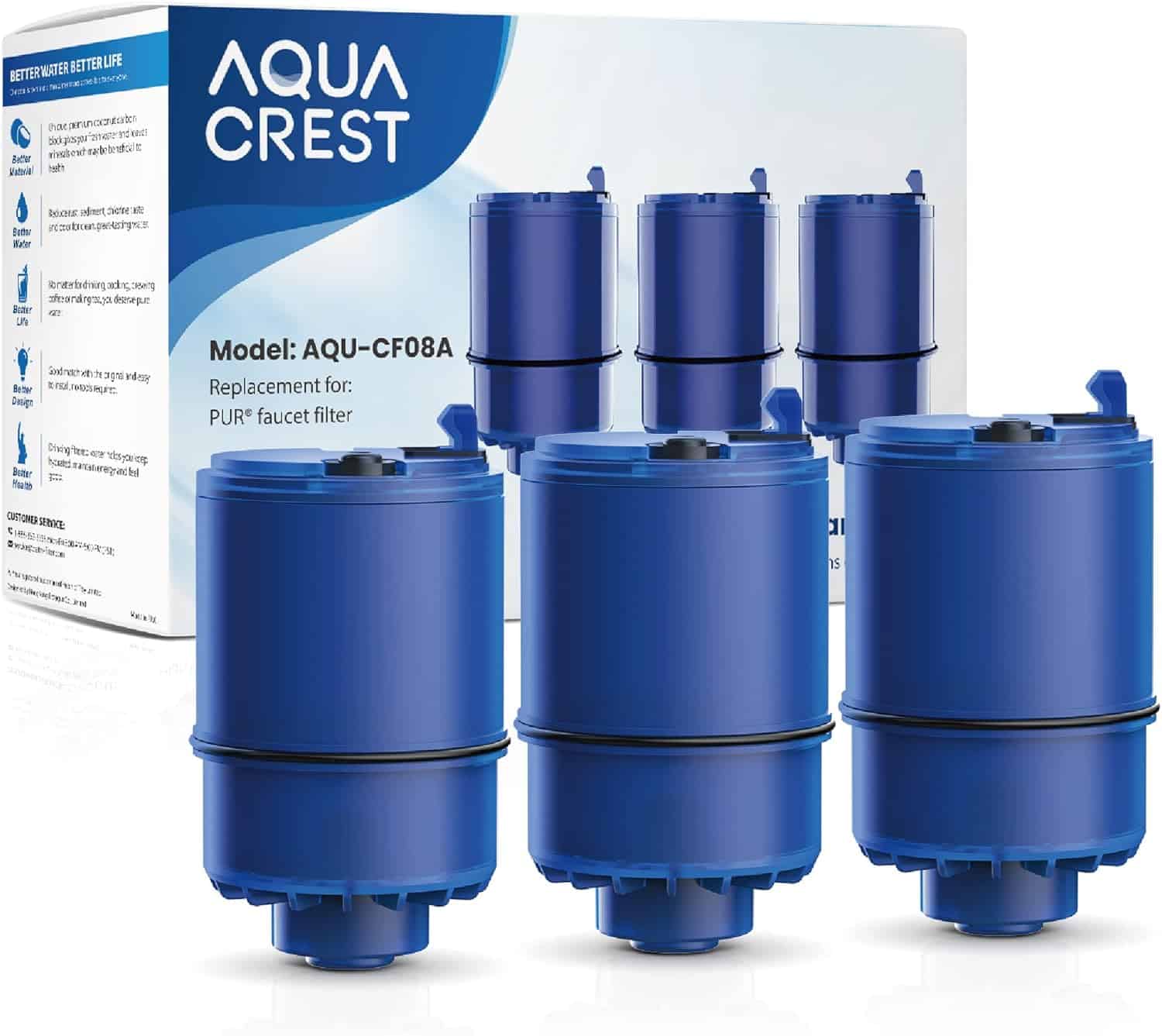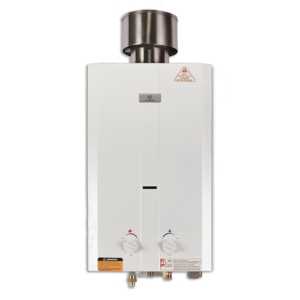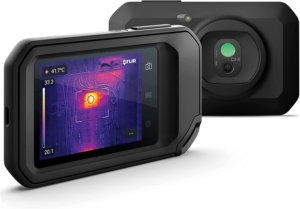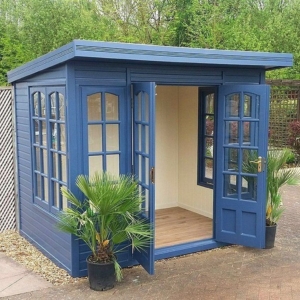Maximizing Energy Efficiency: How a Smart Thermostat Can Save You Money
One of the most effective tools in achieving energy efficiency is the smart thermostat. By harnessing advanced technology and innovative features, smart thermostats can revolutionize the way we control and optimize our heating and cooling systems. In this blog post, we will explore the benefits and features of smart thermostats and how they can help you save money while maximizing energy efficiency.
Understanding Energy Efficiency
Energy efficiency in residential properties refers to the practice of minimizing energy consumption and maximizing energy utilization in order to reduce waste and promote sustainability. It involves adopting various measures and technologies to optimize energy usage while maintaining comfort and functionality within homes. Here are some key aspects of energy efficiency in residential properties:
1. Insulation: Proper insulation in walls, roofs, and windows helps to prevent heat transfer, minimizing the need for heating and cooling. It reduces energy loss and maintains a more consistent indoor temperature.
2. Energy-Efficient Appliances: Choosing appliances with high energy efficiency ratings, such as ENERGY STAR certified products, can significantly reduce energy consumption. These appliances are designed to use less electricity or fuel while providing the same level of performance.
3. Efficient Heating and Cooling Systems: Installing energy-efficient heating, ventilation, and air conditioning (HVAC) systems helps to regulate indoor temperature effectively. High-efficiency furnaces, heat pumps, and air conditioners use less energy to provide the desired level of comfort.
4. Lighting: Switching to energy-efficient lighting options, such as light-emitting diode (LED) bulbs, can significantly reduce electricity consumption for lighting purposes. LEDs are more durable and use considerably less energy compared to traditional incandescent or compact fluorescent bulbs.
5. Smart Home Technology: Utilizing smart home automation systems allows for better control and optimization of energy usage. In heating and cooling systems, insulation, equipment efficiency, and thermostat usage play a significant role in overall energy efficiency. Inefficient thermostat usage, such as constant manual adjustments or leaving the system running unnecessarily, can lead to energy waste and higher utility bills.
6. Energy Audits: Conducting energy audits can identify areas of energy waste and suggest improvements. These audits often involve analyzing insulation, appliances, HVAC systems, and other energy-consuming elements to provide recommendations for enhancing energy efficiency.
7. Renewable Energy Sources: Integrating renewable energy technologies, such as solar panels or wind turbines, into residential properties can help generate clean energy on-site. This reduces reliance on conventional energy sources and decreases carbon footprint.
8. Behavioral Changes: Encouraging energy-conscious behaviors among residents, such as turning off lights when not in use, unplugging electronics, and using energy-efficient settings on appliances, can contribute to energy savings.
9. Building Design and Orientation: Properly designing and orienting residential buildings can optimize natural lighting, ventilation, and solar heat gain, reducing the need for artificial lighting and excessive cooling or heating.
10. Water Efficiency: Implementing water-efficient fixtures and appliances, such as low-flow faucets, showerheads, and toilets, can contribute to overall energy efficiency. Reducing hot water consumption directly reduces the energy required for water heating.
The Rise of Smart Thermostats
Traditional thermostats have been the standard for controlling temperature in homes for many years. However, they have limitations in terms of flexibility and energy-saving capabilities. Enter smart thermostats. These intelligent devices have gained popularity due to their advanced features and ability to optimize energy usage. Smart thermostats provide a seamless and automated way to control temperature settings, resulting in significant energy savings and increased comfort.
Here are five popular smart thermostats available on the market:
- Nest Learning Thermostat: The Nest Learning Thermostat, developed by Nest (a subsidiary of Google), is known for its sleek design and learning capabilities. It learns users’ temperature preferences and creates a personalized schedule accordingly. It can be controlled remotely through the Nest mobile app and integrates with other smart home devices.
- Ecobee SmartThermostat: The Ecobee SmartThermostat is a highly regarded smart thermostat that offers advanced features. It features voice control, built-in Alexa or Google Assistant, and room sensors for temperature monitoring in multiple rooms. It adapts to users’ schedules and preferences, and it is compatible with various smart home platforms.
- Honeywell Home T9 Smart Thermostat: The Honeywell Home T9 Smart Thermostat provides precise temperature control and room-by-room sensing capabilities using remote sensors. It offers geofencing, adaptive temperature control, and voice control through digital assistants like Alexa and Google Assistant.
- Emerson Sensi Touch Wi-Fi Thermostat: The Emerson Sensi Touch Wi-Fi Thermostat is a user-friendly smart thermostat with a responsive touchscreen interface. It offers remote control through the Sensi mobile app, compatibility with voice assistants, and flexible scheduling options.
- Johnson Controls GLAS Smart Thermostat: The GLAS Smart Thermostat from Johnson Controls stands out for its transparent OLED touchscreen display and modern design. It supports voice control via Microsoft’s Cortana and integrates with various smart home platforms. It provides energy usage insights and weather monitoring features.
Key Features of Smart Thermostats
Smart thermostats come equipped with a range of features that set them apart from their traditional counterparts. Programmable scheduling allows you to customize temperature settings based on your daily routines and preferences, ensuring optimal comfort when you need it. Moreover, smart thermostats employ learning capabilities and adaptive algorithms, adjusting temperature settings based on your behavior and external conditions to maximize energy efficiency. With remote control and monitoring via smartphone apps, you have the power to manage your home’s temperature from anywhere, saving energy even when you’re away. Integration with smart home systems and voice assistants further enhances convenience and control, while energy usage reports and insights provide valuable information for better energy management.
Smart thermostats offer several key features that contribute to energy efficiency in residential properties. Here are some common features and how they work to optimize energy usage:
1. Temperature Programming: Smart thermostats allow users to create customized temperature schedules based on their daily routines. This feature enables homeowners to automatically adjust heating and cooling settings to conserve energy when the house is unoccupied or during sleeping hours.
2. Learning Capabilities: Some smart thermostats have learning algorithms that can analyze patterns of temperature adjustments over time. They learn user preferences and create personalized schedules accordingly, optimizing energy usage without the need for manual programming.
3. Remote Access and Control: Smart thermostats can be controlled remotely through smartphone apps or web interfaces. This allows users to adjust temperature settings even when they are away from home. By remotely turning down the heating or cooling when no one is present, energy consumption can be reduced.
4. Geofencing: Geofencing technology uses the location of users’ smartphones to determine if they are at home or away. Smart thermostats can leverage this technology to automatically adjust the temperature based on users’ proximity to the property. For example, when the last person leaves home, the thermostat can switch to an energy-saving mode and then resume normal settings when someone returns.
5. Sensor Integration: Many smart thermostats incorporate occupancy sensors or motion detectors. These sensors can detect when a room or area is unoccupied and adjust the temperature settings accordingly. If no movement is detected for a certain period, the thermostat can activate energy-saving modes or setback temperatures to conserve energy.
6. Energy Usage Monitoring: Smart thermostats provide insights into energy consumption patterns and offer feedback on energy-saving practices. They may display energy usage data, trends, and reports, enabling homeowners to make informed decisions about their energy consumption and identify areas for improvement.
7. Integration with Other Smart Devices: Smart thermostats often integrate with other smart home devices, such as lighting systems or occupancy sensors. This integration allows for coordinated energy-saving actions. For example, if the occupancy sensors detect no one in a room, the thermostat can adjust the temperature and turn off lights simultaneously.
8. Weather Monitoring and Adaptation: Some smart thermostats access weather forecasts and adjust heating and cooling settings accordingly. They consider outdoor temperature, humidity, and other weather conditions to optimize indoor comfort while minimizing energy consumption.
By combining these features, smart thermostats offer greater control, automation, and optimization of temperature settings in residential properties. They enable homeowners to customize schedules, adapt to their lifestyles, and make energy-saving adjustments both manually and automatically. Ultimately, this results in reduced energy waste, lower utility bills, and enhanced energy efficiency.
Saving Money with a Smart Thermostat
The ultimate goal of using a smart thermostat is to save money on utility bills. By providing real-time energy monitoring and cost analysis, smart thermostats enable you to track your energy consumption and identify areas for improvement. They also offer energy-saving tips and recommendations tailored to your usage patterns, helping you make informed decisions to reduce energy waste. Numerous case studies and statistics demonstrate the substantial energy savings achieved through the implementation of smart thermostats. Additionally, many utility companies offer rebates and incentives to encourage the adoption of energy-efficient technologies, including smart thermostats.
| Product Image | Product Name / Primary Rating / Price | Primary Button |
|---|---|---|
|
||
|
||
Tips for Maximizing Energy Efficiency with a Smart Thermostat
To maximize energy efficiency with your smart thermostat, consider implementing the following tips:
1. Set appropriate temperature ranges: Avoid extreme temperature settings and find a comfortable range that minimizes energy consumption.
2. Utilize zoning capabilities: If your home has multiple heating and cooling zones, take advantage of the smart thermostat’s zoning capabilities to personalize comfort and efficiency.
3. Integrate other energy-efficient devices: Combine your smart thermostat with energy-efficient appliances and practices, such as LED lighting and smart power strips, for comprehensive energy savings.
4. Perform regular maintenance: Keep your smart thermostat in optimal condition by regularly cleaning and inspecting it. Additionally, ensure you install any firmware updates to benefit from the latest features and enhancements.
Overcoming Challenges and Considerations
While smart thermostats offer numerous benefits, a few challenges and considerations should be taken into account. Compatibility with different heating and cooling systems should be assessed before purchasing a smart thermostat to ensure seamless integration. Privacy and security concerns related to the collection of personal data by smart thermostats should also be addressed. Furthermore, older homes or rental properties may have limitations or restrictions that could impact the installation and usage of smart thermostats. Balancing energy savings with personal comfort and user preferences is another aspect to consider when optimizing the usage of smart thermostats.
Investing in a smart thermostat is a wise decision that can lead to significant cost savings and environmental benefits. By maximizing energy efficiency, these intelligent devices allow us to reduce our carbon footprint while enjoying the comfort of a well-controlled indoor environment. With programmable scheduling, learning capabilities, remote control, and insightful energy reports, smart thermostats empower us to take control of our energy usage. So, take the leap and join the energy-saving revolution by embracing a smart thermostat for your home. Your wallet and the planet will thank you.
